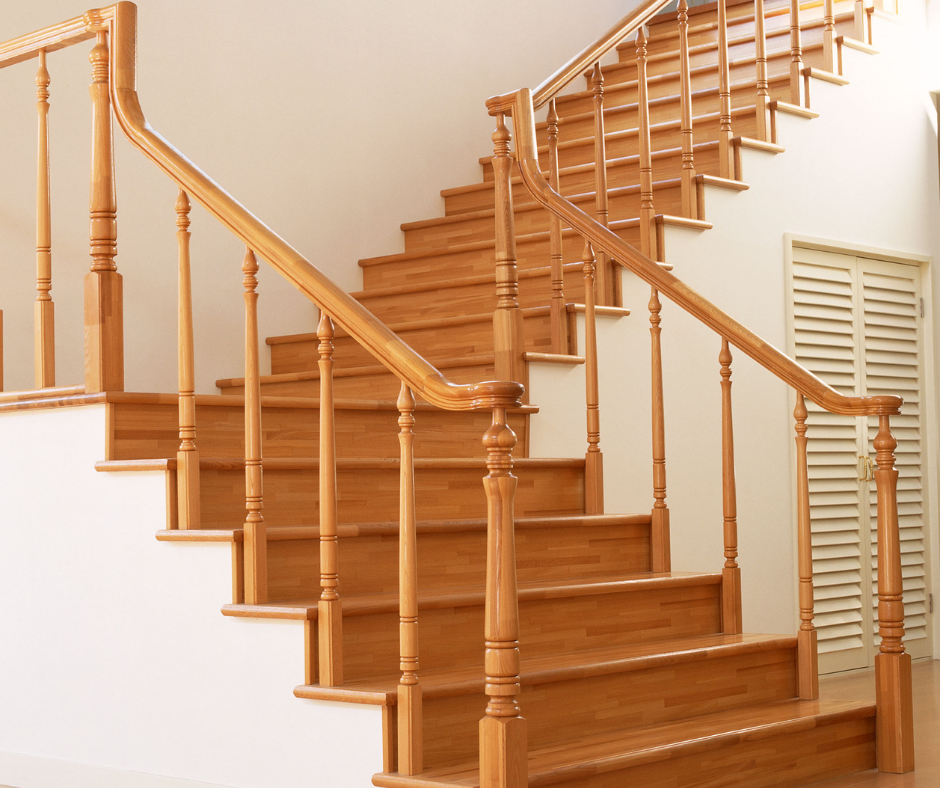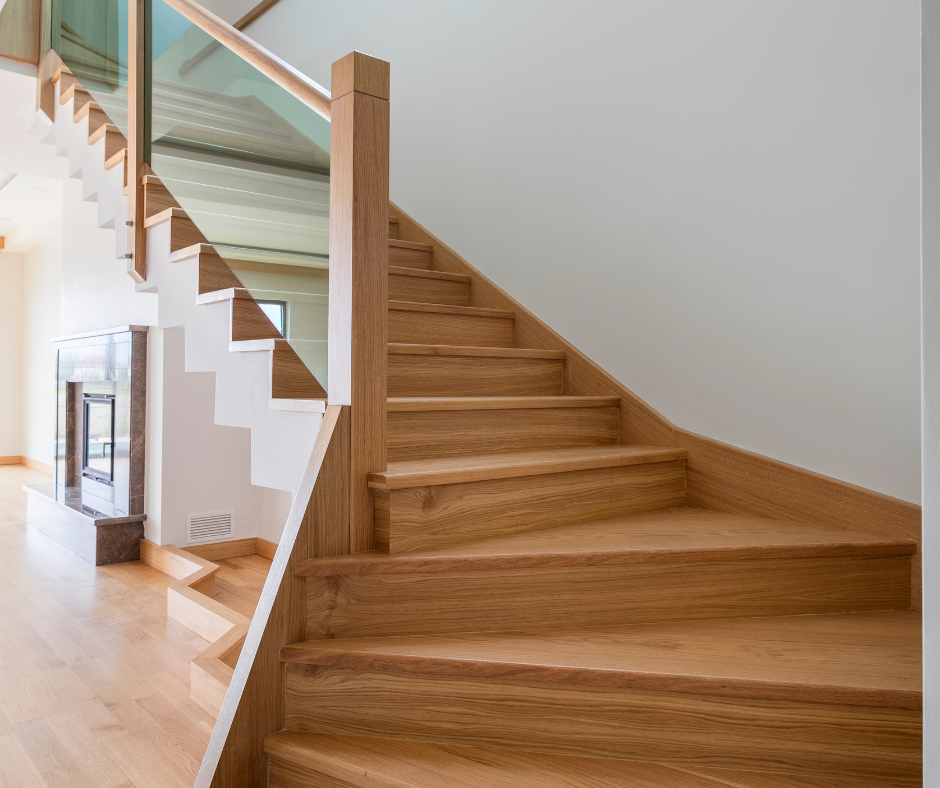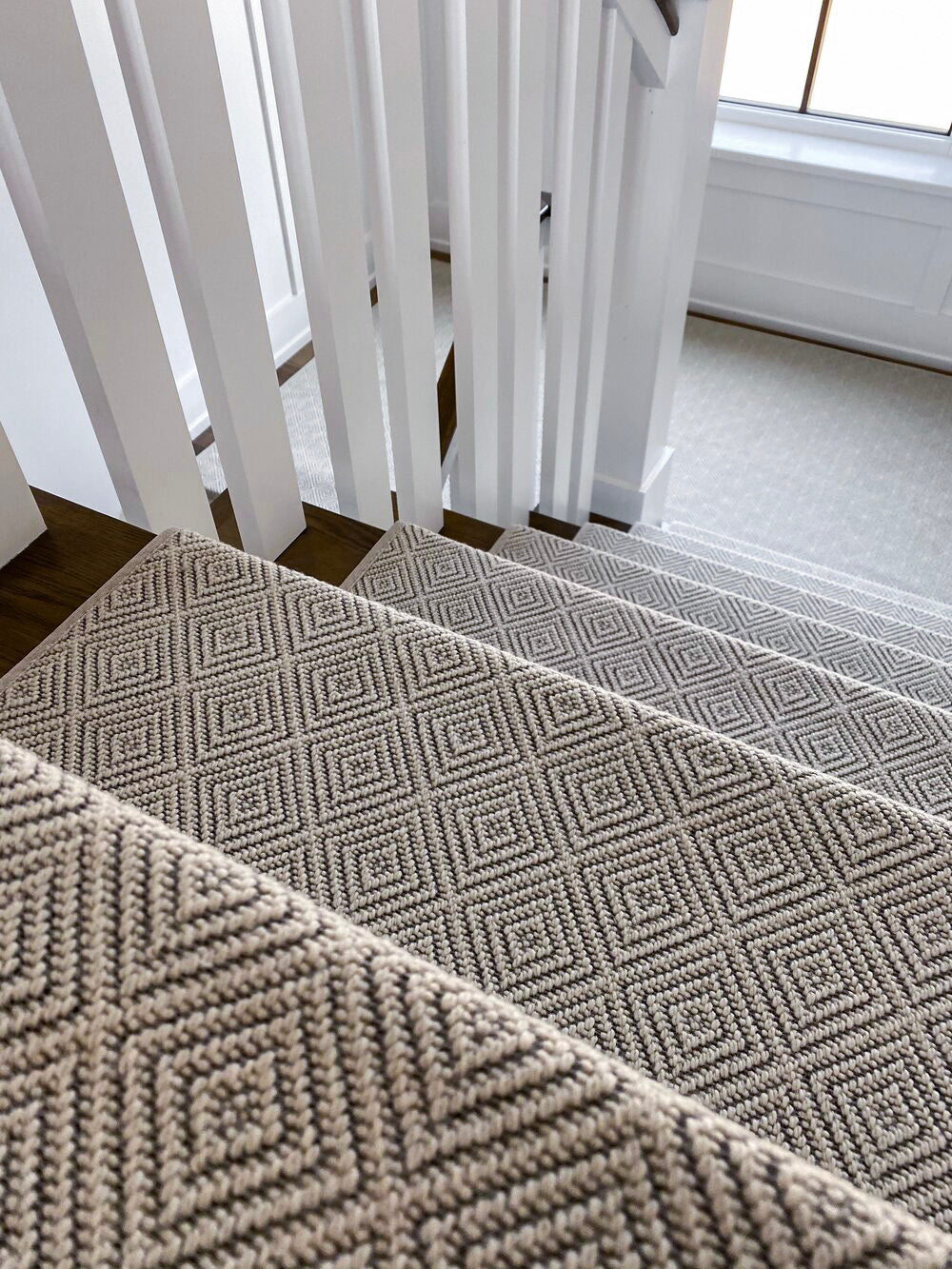Have you ever wondered how to make the most of a tight corner without losing style or safety? Winder stairs may be the solution that transforms your home’s layout into something both beautiful and practical. Designing winder stairs for your space means creating a staircase with angled treads that turn a corner smoothly while saving valuable square footage.
This approach allows you to blend smart engineering with custom design, all while keeping comfort in mind. With the right plan, materials, and carpet stair treads, you may enjoy a stairway that feels safe and looks inviting. Keep reading to learn clear steps, code tips, and design ideas that can make your project feel simple and rewarding.
What Are Winder Stairs?
Winder stairs have steps that fan out to form a curve or angle.
Instead of a flat landing, these stairs create a smooth transition in tight spaces. They’re often seen in L-shaped or U-shaped stair layouts.
Homeowners choose them to:
-
Make better use of limited square footage
-
Add visual interest to an ordinary staircase
-
Create a graceful flow between floors
Benefits of Winder Stairs
Winder stairs offer more than just a clever way to turn a corner. They bring together smart design and everyday comfort, making them a popular choice for homes of all sizes. Whether you’re updating an old staircase or building new, winder stairs may be the perfect fit for your style and space.
Space Saving
Winder stairs are perfect for small areas. They free up floor space you’d otherwise lose to a landing. This makes them a smart option in older homes or tight spots where every inch counts.
Visual Appeal
The angled treads create a stylish focal point that feels custom and high-end. Their unique shape draws the eye and can set your staircase apart from standard designs. They also blend beautifully with many styles, from modern to farmhouse.
Smooth Navigation
When planned well, winder stairs feel natural to walk on, making them comfortable for daily use. Each step flows into the next without awkward turns or uneven surfaces. Good lighting and secure handrails add even more ease and safety.
DIY Friendly
If you’re handy and love a project, winder stairs may be easier to install than you’d think. Many homeowners enjoy the satisfaction of creating a functional feature that also looks beautiful. With clear measurements and the right tools, you can take on the project with confidence.
Important Building Code for Winder Stairs
Before you start planning, you’ll need to understand the building code for winder stairs. Codes can vary by state and city, but here are some typical rules to keep in mind:
-
Tread Width: According to the 2018 International Residential Code (IRC) Section R311.7.5.2.1, each tread must be at least 6 inches wide at the narrow end.
-
Depth: Measured 12 inches from the narrow side, the tread depth should be at least 10 inches, as noted in IRC R311.7.5.2.1.
-
Consistency: Under IRC R311.7.5.1, all risers and treads must be consistent—no variation greater than 3/8 inch between steps.
-
Handrails: IRC R311.7.8 requires a continuous handrail along the entire flight, including the winder portion.
Tip: Always check with your local building department before you build or remodel. Your area may have additional rules to follow.
L-Shaped Winder Stair Design Ideas
An L-shaped winder stair design combines two straight flights with a turn. Here are a few ideas to inspire you:
1. Modern Minimalist: Use sleek wood treads and a slim metal handrail for a clean, airy look.
2. Farmhouse Warmth: Choose rich oak or maple treads paired with white risers to bring warmth and charm.
3. Classic Craftsman: Stained wood with chunky newel posts can add timeless style to your space.
4. Carpet Comfort: Oak Valley’s carpet stair treads may help you add traction and comfort, especially if you have little ones or pets.
Planning Your Winder Stairs
Designing wider stairs for your space takes careful measuring and smart planning. Here’s a step-by-step approach to get started:
Step 1: Measure Your Area
Record the total rise (floor to floor height) and the space available for the stair footprint.
Step 2: Sketch the Layout
Draw your staircase with the winder section placed at the turn. Use graph paper or design software to stay precise.
Step 3: Choose Materials
Decide if you want wood, carpet, or a combination. Consider how each option feels underfoot and fits your style.
Step 4: Think About Safety
Winder stairs should have non-slip surfaces and proper lighting.
Step 5: Check Codes
Review your local codes again before you build.
How Carpet Treads Help Winder Stairs
If you’ve worried about slipping on angled steps, you’re not alone. Carpet stair treads may help:
-
Improve traction for kids and pets
-
Add a soft layer of comfort
-
Reduce noise from foot traffic
-
Protect your wood finish
Oak Valley’s stair treads are made to fit individual steps, including winder designs. Because they don’t require nails or permanent adhesives, they’re easier to install and remove than traditional runners.
Style Tips for Winder Stair Projects
-
Use contrasting colors on treads and risers to make steps easier to see.
-
Add LED lighting under treads for safety and style.
-
Mix materials—like stained wood with carpet—to get the best of both worlds.
-
Keep decorations minimal so the angled design can shine.
Frequently Asked Questions
How do winder stairs compare to a traditional landing?
Winder stairs often save more space than a flat landing and create a smoother flow. They may also cost less to build in some layouts because you don’t need extra framing for a landing platform.
Are winder stairs harder to walk on than straight stairs?
When built to code, winder stairs feel comfortable and natural underfoot. Adding carpet treads may help improve traction and make them even safer for kids and pets.
Can winder stairs work in older homes?
Yes, winder stairs may be a great fit in older homes with tight corners. Just be sure to measure carefully and check that the design meets local safety codes.
What materials work best for covering winder stairs?
Many homeowners choose a mix of wood and carpet for comfort and style. Oak Valley’s carpet stair treads are made to fit angled steps without permanent adhesives.
Do winder stairs affect resale value?
A well-designed winder staircase may add visual appeal and smart use of space, which many buyers appreciate. Just be sure it’s installed professionally and follows all building codes.
Stepping It Up
Winder stairs may feel like a big design challenge at first. They have angles and details that seem tricky to figure out. But with a little planning, you may find they fit your space beautifully.
The right materials can turn an ordinary stairway into a standout feature you’re proud to show off. Whether you add cozy carpet treads or sleek wood finishes, every choice matters. Take it step by step, and soon your stairs may feel safe, stylish, and complete.
Bring Your Winder Stairs to Life Today
Ready to make your winder stairs safe, stylish, and uniquely yours? Explore Oak Valley’s premium carpet stair treads—crafted for tricky corners, DIY-friendly, and built to last.
-
Website: https://oakvalleydesigns.com/
-
Phone: (706) 331-0315
-
Email: info@oakvalleydesigns.com
-
Address: 30 River Ct SW Bldg E Cartersville, GA 30120




